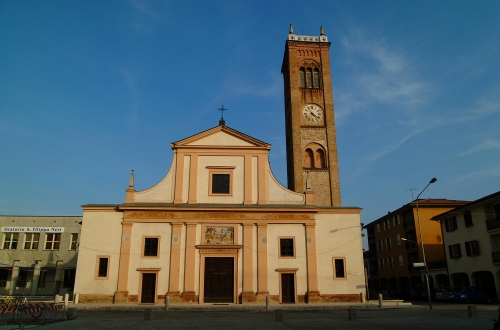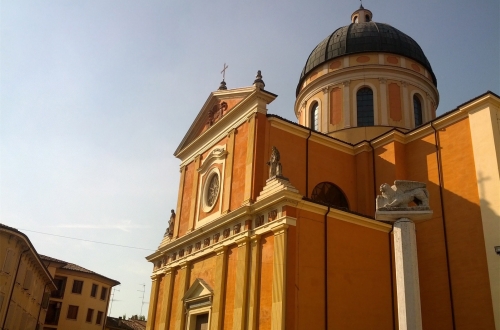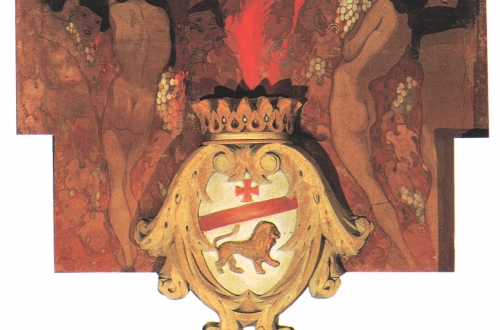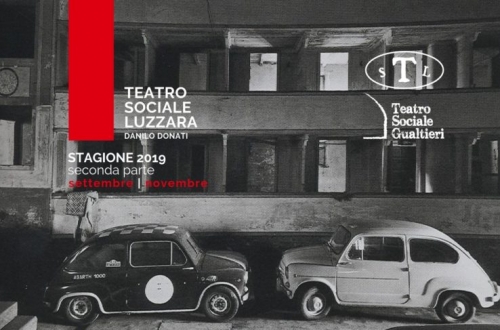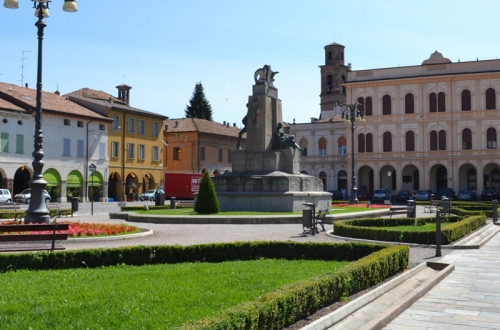Squares and Churches
Another fascinating itinerary is related to the squares of the lands. Every town has its main square and nearby there is often a church.
The trip starts in Luzzara: here you will find Piazza Ferrari - not very large - from which you may admire the 55-meters high civic tower - whose construction began in 1724 and continued until 1780. If you look closely, on top of it you can see a pike - symbol of the town. Another square - not far from the main one - is dedicated to Adolfo Tedeschi. In the square you may admire the Social Theatre, dating back to the 19th century and reopened to the public a few years ago, on occasions of concerts, film screenings, presentations, ...
Heading towards the next town, Guastalla, you may decide to take a walk in “Mazzini” Square. Ancient “Piazza Maggiore”: this is how it was historically called. Nearby, you may admire the most significant buildings of ducal, civil and religious power. On the east side stands Palazzo Ducale, in front of which you may see a statue dedicated to Ferrante I Gonzaga. The Gonzaga, first of the illustrious family in the town, is depicted in the act of trampling a satyr, a symbol of vice, and a beheaded hydra depicting envy and slander. On the north side stands the Cathedral of St. Pietro - built by the will of Duke Cesare Gonzaga in the 16th century - which has undergone several modifications over time.
Our journey through streets and squares continues in Gualtieri, where you can visit one of the most beautiful squares in Italy: Piazza Bentivoglio. Here, you can also admire the Palace which gives its name to the homonymous square, the clock tower and a church dedicated to “Santa Maria della Neve”, whose facade was designed by Giovan Battista Aleotti.
Then, you may head towards Boretto - a town with a small and yet historical square. Piazza San Marco houses the homonymous Basilica and the Town Hall - which incorporated the Civic Tower (1663-1723). The Council Hall offers a wonderful example of Art Nouveau decoration, by Marcello Nizzoli. In front of it, you may admire a winged lion, the symbol of Venice, which was donated to Boretto by the city itself in 1958, in remembrance of the ancient commercial relations.
A few kilometers away, you will find Brescello's square, Piazza Matteotti. Here, you can take nice photos and selfies with two bronze statues representing Peppone and Don Camillo, who “greet” each other from the sides of the “piazza” (Don Camillo near the church, Peppone in front of the Town Hall). Nearby, you can admire the church dedicated to “Santa Maria Nascente”, whose interior is divided into three naves, with six side altars - three on each side. In addition, it is characterized by large arches separating the main nave from the smaller ones and by a wooden Crucifix by Bruno Avesani.
The trip continues towards the inlands - those Municipalities which are not located near the river Po banks. In Novellara, you will find Piazza Unità d’Italia, a large rectangular area, enclosed by Renaissance porches and by the imposing Collegiate Church - dedicated to St. Stefano - on the west side. The square is the heart of the town, dotted with historic shops and usually home to festivals and markets. Regarding the Collegiate Church, it is known that the “pieve” (parish) of Novellara was probably established in the 5th century. The church reconstruction began many centuries later, in 1512, but it was soon interrupted and only resumed in 1567, when Alfonso I Gonzaga decided to entrust the project to Lelio Orsi. In the same year, Pope Pius V conferred the title of collegiate church. The religious building was completed only in 1582. The bell tower was built between 1616 and 1620, and later, in 1642, important renovations carried out by Niccolò Sebregondi gave the church the appearance it still retains.
The second town you will meet is Reggiolo. Its historical centre is placed near the medieval Fortress. This building was constructed around the high tower dating back to 1242, which later became the central keep of the fortified complex known as “Castrum Novum”. The Fortress was surrounded by large moats and stood on a low artificial hill, known as the “mota”.
Finally, the last town of our trip is Poviglio, with Piazza Umberto I and the church dedicated to St. Stefano, which was built between 1250 and 1300. Restored in the 19th century, it has a large and bright facade, divided by lesenes and liturgically oriented from east to west. It is vertically subdivided into two sections, with a raised central part. The facade also includes a triangular pediment, curved finials on both sides with pyramidal acroterions at the top.


